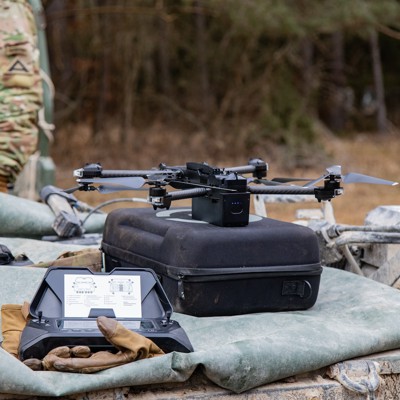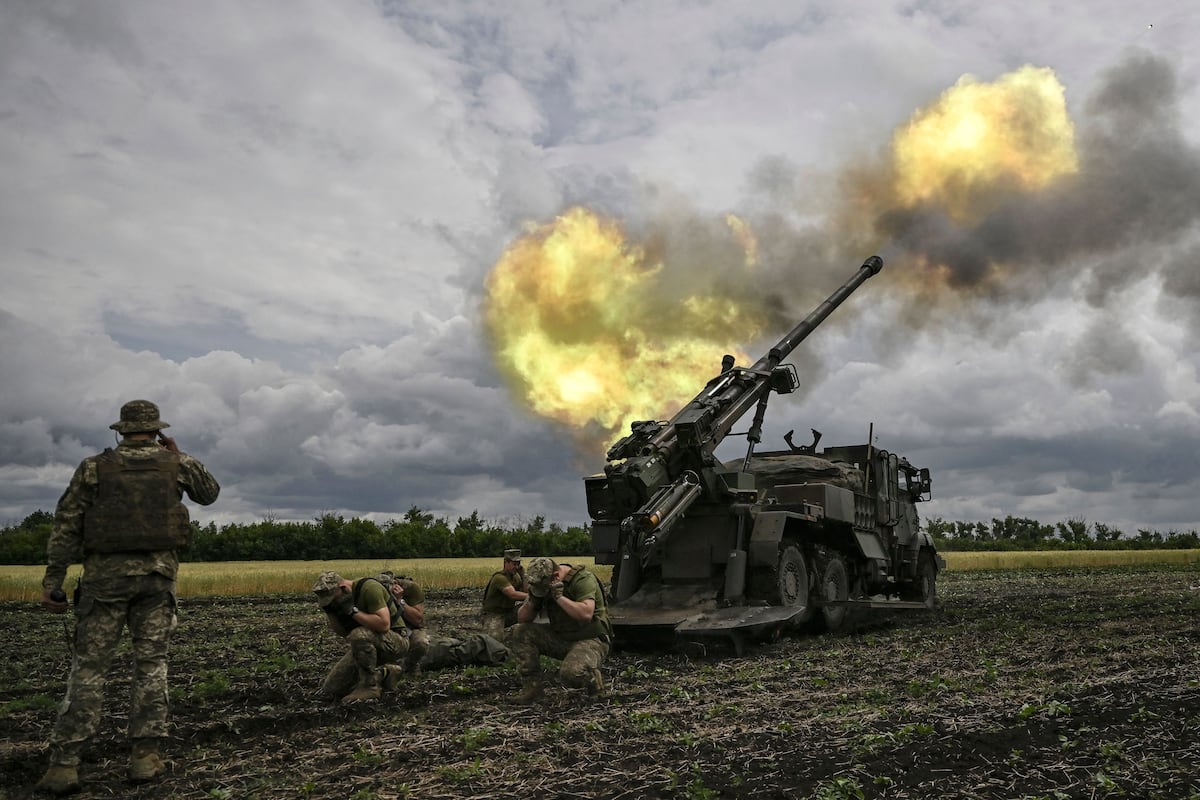The Army is going all-in on its effort to finally crack the code on rapid acquisition in a giant bureaucracy.
Transformation in Contact is in its second wave this year, expanding beyond infantry brigade combat teams to Stryker and armored units with planned expansion for protection and sustainment troops to get their chance to test the latest technology in the field and report back with their suggestions.
“So in the Army, we like to say they’re only lessons observed—they’re not lessons learned until we actually change how we train and operate, change how we organize, and then change how we buy things, and that is the idea behind transforming in contact,” Gen. Randy George, the Army’s chief of staff, told Defense One in a recent interview.
George had just returned from visiting 3rd Brigade Combat Team, 10th Mountain Division in Germany at the Combined Resolve exercise, where soldiers tested out the TiC concept in cold weather for the first time.
“And so we learned a lot of lessons about, you know, battery technology as an example, and the challenges with cold weather,” George said. “And that had a lot of impact with the drones that we were flying.”
The signature feature of TiC is not only that soldiers test out new gadgets in the field, but that the defense industry engineers who develop them are also in the field, so feedback flows directly and changes can be made right away.
“And I think that that’s the most exciting thing, is that we’re seeing changes in weeks and months, rather than waiting years to advance,” George said.
New gear on the way
The big takeaway from the Germany exercise is that the Army is going to need to have different equipment set-ups for different weather. The drones 3-10 Mountain used were longer range, cheaper, and more hardened than the ones fielded for 2nd Brigade Combat Team, 101st Airborne Division in Louisiana last year.
“You need, you know, different kit when you’re going to operate up in the Arctic—drones work differently up there. The network works differently up there,” George said. “Same thing in the Pacific. So I think we can do that.”
The Army is rethinking everything a soldier carries around, in fact, with an initiative dubbed Squad as a System. In practice, new gear buys will focus on consolidating the many types of radios, batteries, sensors, and other kit weighing soldiers down to the tune of 80 pounds.
“So every aspect of every system that a soldier has, we’re taking a hard look at every single one of them,” Maj. Gen. Chris Schneider, head of Program Executive Office Soldier, said in March at AUSA’s Global Force Symposium. “So nothing will be safe, in that regard.”
New tech will also help formations lighten their equipment loads, George said.
“We’re getting rid of excess inside of our formation,” he said. “Where we typically had big satellite dishes, server stacks, and, you know, all kinds of extra vehicles, we’re now talking about a commander that’s on the field and his staff that is basically operating off of tablets and software-defined radios and, you know, very simple kit, which will make us much more mobile, much more lower signature.”
Other examples include the new infantry squad vehicle, which has a diesel-hybrid engine that can run a unit’s command and control system for days at a time without the noise of a generator, and the advent of cheap 3D printing systems that can be brought to the battlefield to replace broken parts.
“We can reduce the supply lines that we have,” George said. “So if you’re reducing the fuel, you’re reducing the supply lines that we have, your formations are a little more lean.”
Force design update
The next phase will include some rethinking of how the Army fights. The Global War on Terrorism saw the introduction of brigade combat teams, designed as a standalone force of about 4,000 soldiers, with several types of combat units, engineers and a support battalion.
Those worked well plugged into forward operating bases and combat outposts and Iraq and Afghanistan, but the Army is thinking it will need much bigger formations maneuvering together on a battlefield in a near-peer fight.
“What we’re getting after … is we are going to make some decisions on how the Army is organized in our brigade combat team,” George said, ahead of a March deadline for new force design ideas. “We will broadly have the same formations, but we will have some flexibility based on what environments they go to, which I think is different.”
The service it’s pinning these updates to a certain year, George said, because the idea with everything right now is to do it immediately.
“I’m not a fan of ‘Army 2030,’ “ he said. “We talk about continuous transformation, because we need to get better, you know, month to month and year to year.”
Funding change
The same goes for their new acquisition strategy.
“We don’t want to pick a drone and fly that same drone for the next 30 years,” George said. I mean, we did that. We canceled a program about a year ago this time, where we actually said, ‘Hey, this was a good drone several years ago. But we don’t want to be locked into that.”
And along with that, the Army doesn’t want to spend years finetuning the requirements and developing a system from the ground up while technology speeds right past them. Instead, they’d like to present a problem, get some feedback on how to solve it, and then buy in smaller blocks, maybe from multiple companies.
“You know, in the past, typically we had written these, you know, two or 300-page documents for requirements. And now we’re describing the problems that we’re trying to solve,” George said. “And we’ve called it a ‘characterization of need.’ And what that has allowed is industry, and all of these brilliant minds that are out there, they can help us figure out how to solve our problem.”
Moving quickly gets rave reviews at the unit level, George said, but “certainly the bigger challenge is probably back here” at the Pentagon, where the entrenched bureaucracy slows everything down.
Then there’s Capitol Hill, where lawmakers echo the need for faster acquisitions, but tend to write the budget in such a way that the Army doesn’t have the flexibility to pull money from the operations account, for example, to cover an emergent acquisitions need.
“We’re looking at, what are the financial management regulations that need to change?” George said. “But I think there’s a broad consensus that we need to make these adjustments and kind of move out on it. So, I mean, I’m getting positive feedback, and obviously the devil’s in the details as far as figuring that out, but I’m optimistic.”
Read the full article here








Leave a Reply